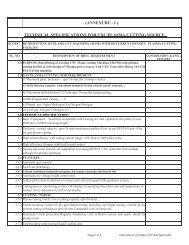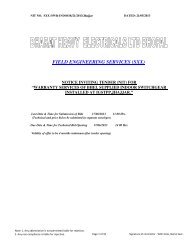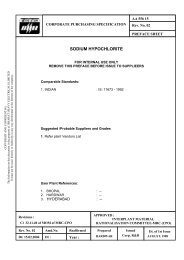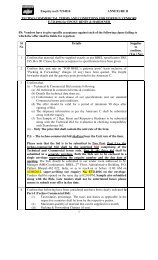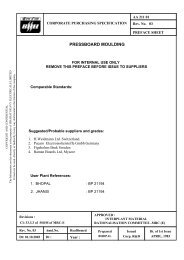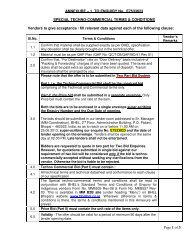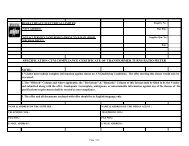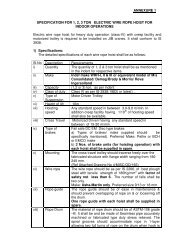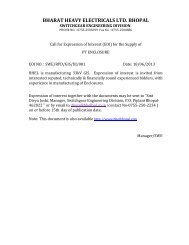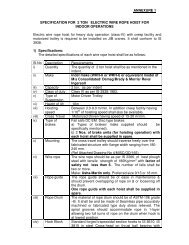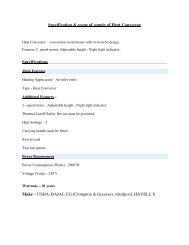instruction manual - BHEL Bhopal
instruction manual - BHEL Bhopal
instruction manual - BHEL Bhopal
You also want an ePaper? Increase the reach of your titles
YUMPU automatically turns print PDFs into web optimized ePapers that Google loves.
3 COMMISSIONING<br />
SECTION 3<br />
3.1 TESTING AFTER ASSEMBLY OF THE TRANSFORMER/ REACTOR<br />
AT SITE.<br />
After the transformer/reactor has been assembled at site, it shall be<br />
tested in order to check that it has not been damaged during transport and<br />
assembly to such an extent that its future operation will be at risk. Regarding<br />
the performance of the test, refer to the testing method as per standards. The<br />
results of the test shall be documented as detailed in Clause 3.2 "commissioning<br />
checks -Transformers" and Clause 3.3 commissioning checks - Reactors.<br />
3.1.1 APPLICATION OF VOLTAGE<br />
If possible, the voltage should be increased step by step up to rated<br />
voltage. This may be done by connecting the transformer/reactor to a generator<br />
whose voltage is raised slowly. The higher the rated voltage of transformer/<br />
reactor the more important it becomes that the application of the voltage is<br />
done as described. If it is not possible to use a generator, the transformer/<br />
reactor may be connected directly to a live line.<br />
After the first application of voltage, the transformer/reactor shall be<br />
checked carefully (gas relay, temperatures, leakages).<br />
When the transformer/reactor has been is service for some weeks with<br />
normal working temperature, all sealing joints shall be re-tightened.<br />
3.1.2 ENERGISING<br />
The initial magnetising current at the time of switching will be very<br />
high. This depends on the particular moment in the cycle. The transformer<br />
should always be soaked for few hours under constant care i.e. keep it<br />
energized. If the breaker trips on differential, Buchholz or any other device,<br />
the cause must be investigated before re-energising the transformer or reactor.<br />
After successful charging, performance of the transformer/reactor , OTI, WTI<br />
readings should be monitored for 24 hours and ensured that they are as per<br />
loading.<br />
3.1.3 ANALYSIS OF GAS<br />
The gas conected in the relay will help to identify the nature of the fault.<br />
It is suggested that the following checks are made at convenient intervals or<br />
following the indication of accumulation of gas through alarm signal.<br />
1. Rate of gas collection- The greater the rate of gas collection, the more<br />
severe is the nature of the developing fault.<br />
2. Colour of the gas helps in finding the affected material as follows.<br />
Prepared By Samvet Lahari, <strong>Bhopal</strong>. Phone- 5277412



